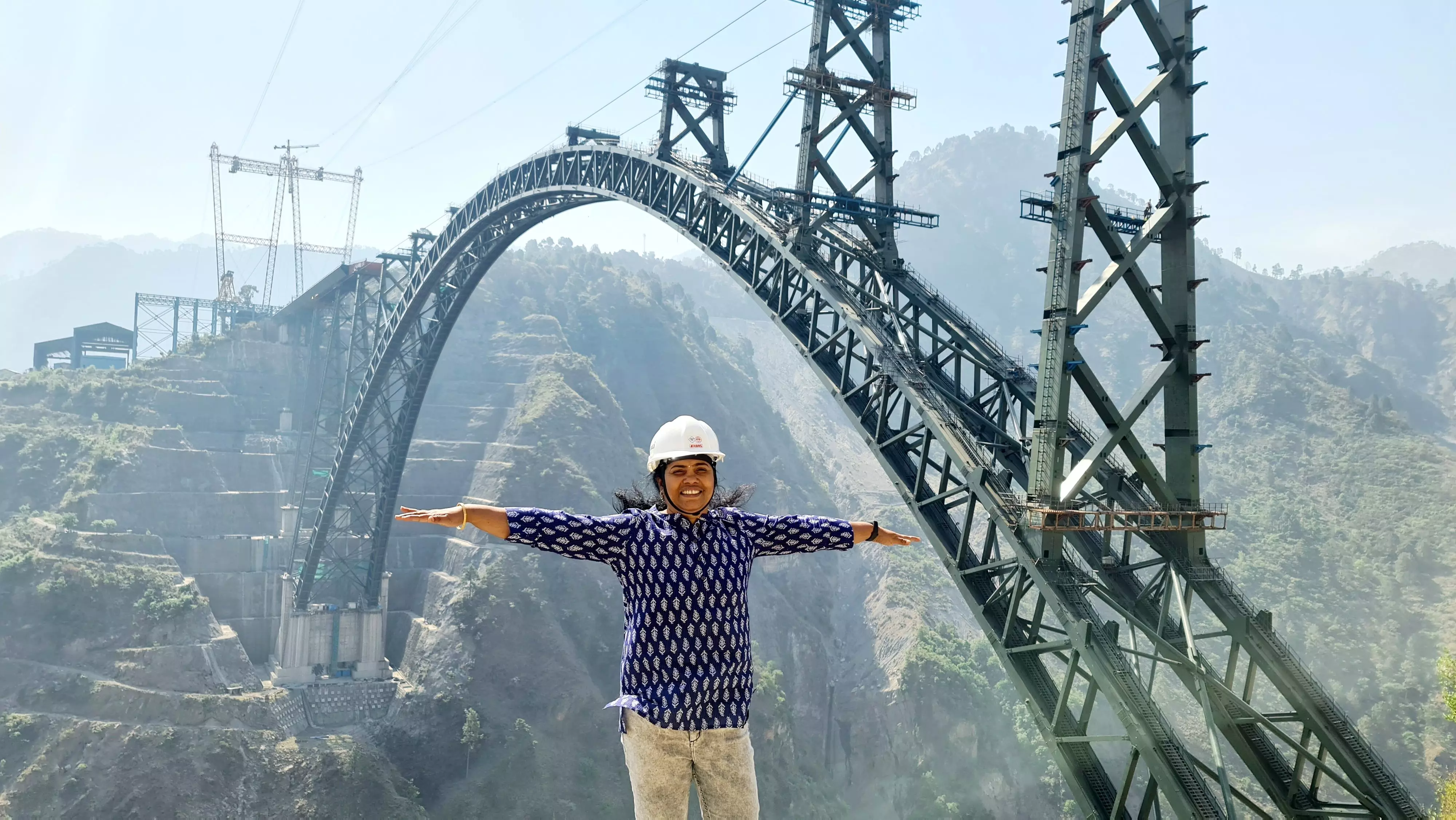Meet the IISc Engineer Behind the Chenab Bridge
Prof. Latha has been at IISc in the Department of Civil Engineering since 2003, and she played a crucial role in solving the tough Himalayan terrain where the bridge stands.

When the Vande Bharat Express first ran from Jammu to Srinagar on February 20, 2024, it was not another train to be launched, it wasn’t just another milestone in Indian infrastructure: it was the almost completion of the Udhampur-Srinagar-Baramulla Rail Link (USBRL), among the most difficult railway construction projects in India’s 70 years of independence. At the heart of it all is the Chenab Bridge, now touted as the highest arch bridge in the world. And one of the main players involved in its successful construction is Professor G. Madhavi Latha, a rock engineering engineering expert from the Indian Institute of Science (IISc), Bengaluru.
Prof. Latha has been at IISc in the Department of Civil Engineering since 2003, and she played a crucial role in solving the tough Himalayan terrain where the bridge stands. Her role was in identifying slope stabilisation, foundation safety, and managing geotechnical risks in the hazard-prone, high elevation, seismic zones that exist in the Reasi district of Jammu and Kashmir.
From a Rural Village in Andhra Pradesh to National Projects
A small village in mountain, Yedugundlapadu in Andhra Pradesh, Prof Latha was and still is the first engineer from her community. She graduated with a BTech from JNTU Kakinada and then an MTech from NIT Warangal, and later got her PhD at IIT Madras! For 17 years, she has been working with Northern Railways, and the infrastructure company Afcons, on various parts of the Chenab Bridge. She was specifically engaged to consult on rock slope stability and managing foundation anchoring in an unpredictable geological area of Himalayas.
A challenge
The Chenab Bridge is 359 metres (higher than the Eiffel Tower) above the river bed and 1,315 metres long across the Chenab River! The bridge has been built at a cost of ₹1,486 crore. The bridge has strict constraints for: wind speeds of up to 260kph, seismic forces, spend more than 120 years in service. Prof. Latha's research results on geosynthetics which are materials that are used to reinforce soil and her image based analysis was then used to study the response of the terrain under stress conditions when an analysis was commissioned. This research supported engineers designing slope stabilisation systems used to allow the bridge to not only be safe during construction, but also, safe once the bridge was in place.
The Indian Institute of Science has publicly acknowledged her contribution, "We are extremely proud of Dr G Madhavi Latha for contributing to the development of the Chenab Railway Bridge.“Her efforts were instrumental in making this engineering landmark a reality." Her impact was also widely shared in social media channels through the institute and professionals in the field.
The USBRL project, of which 255 km is completed, will now provide all-weather rail connectivity between the Kashmir Valley and much of India. The Vande Bharat Express has reduced the travel time between Katra and Srinagar to under 3 hours. This not only benefits civilians, but also the military logistics in the area. Once far-flung, and inaccessible for lengthy periods of the year, a remote region has become much more reliably and safely accessible, even during winter months. This accessibility will bring long-term economic and strategic advantages to the region.
Prof. Latha can continue her academic endeavors at IISc and will also contribute to the development of national infrastructure. From a small village in Andhra Pradesh to now helping to lead a project of national importance is a constant reminder of how important applied research and the expertise of many years is in nation-building. Though the Chenab Bridge may be a landmark, it is also an accolade to the engineers, particularly one, Prof. G. Madhavi Latha, whose work often happens behind the scenes, but whose impact is built to last.

